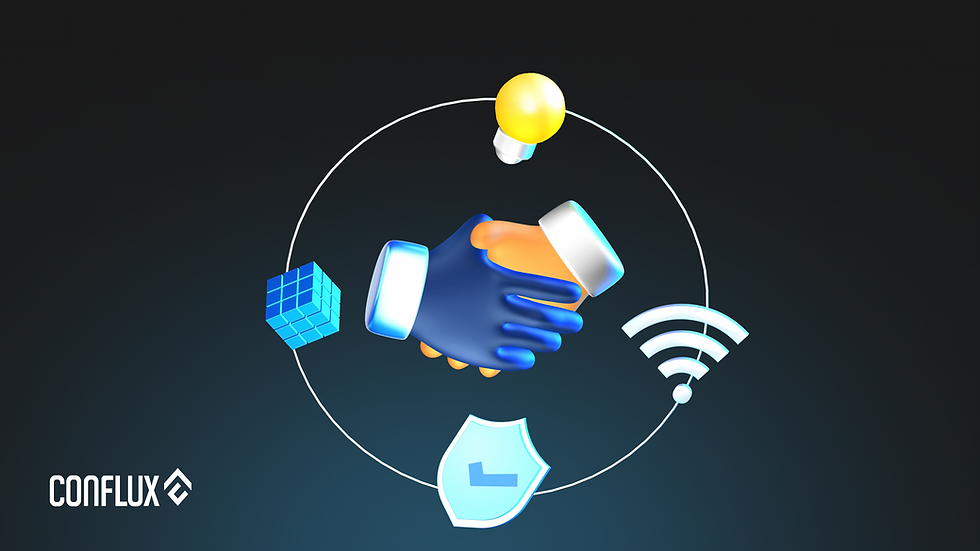Understanding Web 3.0
- Conflux Network
- Aug 1, 2022
- 3 min read
Updated: Aug 2, 2022

Simply put, Web 3.0 (Web3) is the third generation of the evolution of web technologies known as the semantic web that lets users create, share, and connect content via search and analysis. The first generation was referred to as Web 1 also known as the first stage of the internet evolution, the read-only web.
The Second generation, Web 2.0 was the participative web, hinged on participation, user-generated content, and the social media era. Web 3.0 is an evolutionary era of the internet that isn’t fully fixed yet but is in progress. It is primarily backed by Machine Learning (ML) & Artificial Intelligence (AI) which are used to create intelligent and adaptive applications. Web 3.0 is hinged on decentralization, a concept that essentially means the transfer of control and decision-making from a centralized entity (individual, organization, or group thereof) to a distributed network.
In terms of its infrastructure, Web 3.0 is built mainly on open-source software. It is trustless (for example, transactions can occur without trusted third parties) and permissionless (transactions can take place without permission).
The list below shows a more constructive understanding of the similarities and differences between each of the evolutions.
Web 1.0 (Active 1989-2005)
● Created in 1989 by Tim Berners-Lee
● Static website content
● Centralized infrastructure
● Typically read-only
● Owned content (Information Delivery)
● Visual/interactive Web
● Home pages
● Web page
● HTML/HTTP/URL/Portals
● Page views
● File/web servers, search engines, e-mail, P2P file sharing, content and enterprise portals
● Directories
● Focus on the company
● Encyclopedia Britannica online
● Banner advertising
● Relational database-driven content and application delivery
Web 2.0 (Active 1999-2012)
● Term coined by Tim O'Reilly in 2004
● Dynamic content and user input
● Cloud utility infrastructure that is still largely centralized
● Strongly read-write
● Shared content (E.g social content)
● Programmable Web
● Wikis and blogs
● Web service endpoint
● XML/RSS
● Cost per click
● Instant messaging, Ajax and JavaScript frameworks, Adobe Flex
● Tagging the user
● Focus on the community
● Wikipedia
● Interactive advertising
● Relational database-driven content and application delivery
Web 3.0 (Active 2006-ongoing)
● Modern usage with blockchain defined by Gavin Wood, co-founder of Ethereum, in 2014
● Semantic content that can benefit from AI
● Decentralized, edge computing and peer-to-peer
● Read-write-interact
● Consolidated content (e.g metaverse worlds)
● Linked data Web
● Waves and live streams
● Data Space
● RDF/RDFS/OWL
● User Engagement
● Personal intelligent data assistants, ontologies, knowledge bases, semantic search functions
● User behavior
● Focus on the individual
● The Semantic Web
● Behavioural advertising
● Blockchain-based distributed services
Key concepts in WEB 3.0
DAO- A DAO, or “Decentralized Autonomous Organization,” is a fully autonomous and transparent community-led entity with no central authority.
Decentralized Finance- Decentralized finance offers financial instruments without relying on intermediaries such as brokerages, exchanges, or banks by using smart contracts on a blockchain.
Cryptocurrency- A digital currency in which verified transactions and records are maintained by a decentralized system using cryptography, rather than by a centralized authority.
Blockchain Bridging/Cross-Chain Bridge- Connecting two blockchains and allowing users to send cryptocurrency from one chain to the other.
dApps- Decentralized applications are applications that are built on top of blockchain and make use of smart contracts to enable service delivery in a programmatic approach that is logged in an immutable ledger.
NFTs- Nonfungible tokens (NFTs) are tokens that are stored in a blockchain with a cryptographic hash, making the token unit unique.



Comments